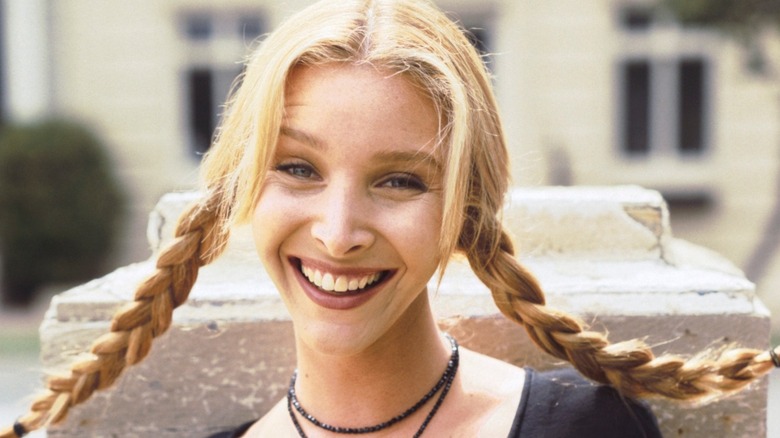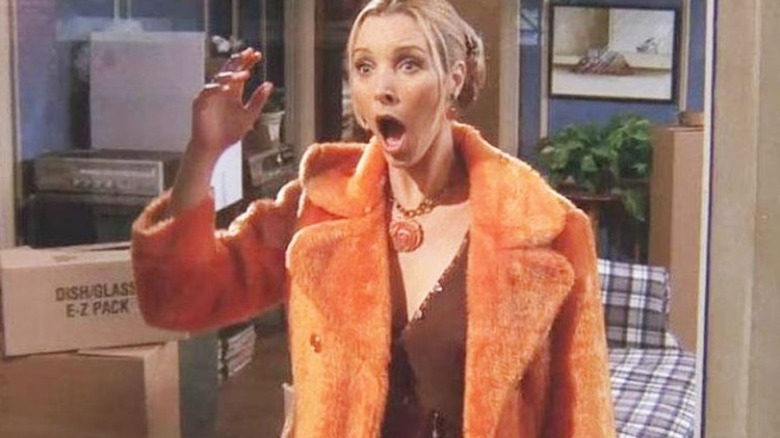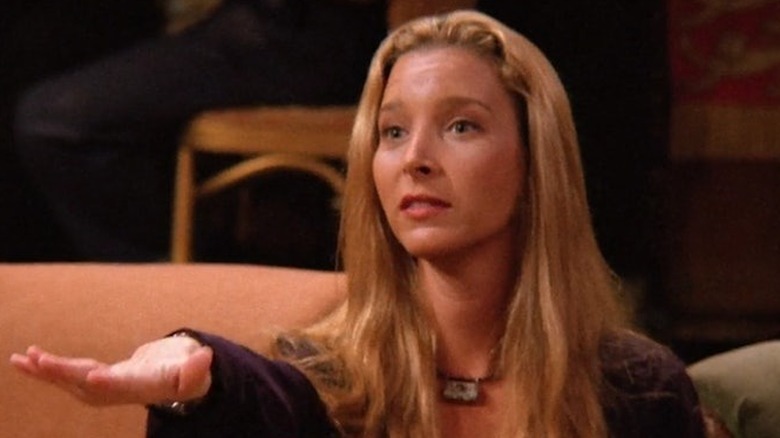The Phoebe Theory That Changes Everything On Friends
Ahh, fan theories. They've told us that "Gilligan's Island" is a metaphor for the seven deadly sins — or possibly hell, per MeTV. They've suggested that "Rugrats" is the result of the imagination of a traumatized Angelica Pickles and not just a silly show about babies who can't talk in front of grown-ups, via Bustle. They've even suggested that Will Smith (the character, not the actor) is supposed to be dead throughout the run of "The Fresh Prince of Bel-Air," and the Banks family and their palatial mansion are supposed to represent heaven. In the imagination of the viewer, Al Bundy and Jay Pritchett are the same character, Homer Simpson is lingering in a coma (which conveniently explains the changing tone of "The Simpsons") and Ted Mosby keeps telling his kids inappropriate details about his past because he's a victim of Alzheimer's disease.
Don't get us started on the infamous "Saint Elsewhere" character Tommy Westphall, who, thanks to an end-of-show plot twist that renders the whole show a fictional story taking place in his head and a bunch of out-branching crossover appearances, is now the creator of over half of American television's fictional landscape.
There's an interesting fan theory that's been circulating about everyone's favorite dippy sitcom guitarist — Phoebe Buffay from "Friends," as portrayed by Lisa Kudrow – and if it's true, it changes the entire scheme of the sitcom as we know it. Keep reading to find out what it's all about.
As Phoebe would say, this is 'brand new information'
Quoting a theory by Twitter user Gareth Stranks, Screen Rant wrote that the "Friends" theory is supposed to act as an alternate ending for the beloved sitcom. In this alternate ending, it's revealed that Phoebe not only isn't friends with the other five characters in the cast — she doesn't even know them.
This alternate ending goes on to state that Phoebe is a homeless woman who spends her days loitering outside Central Perk and sleeping nearby in a park. The other five friends — Joey, Monica, Rachel, Chandler, and Ross — all actually exist and hang out together in a group inside the shop. A lonely — and stoned — Phoebe daydreams her time away as she watches their antics from a distance. To the fivesome inside the shop, however, Phoebe is known as "the crazy lady who always stares at us," and their relationships and personalities are entirely different from the ones she imagines them to have.
Stranks' theory ends with Phoebe looking at her reflection in a mirror, with the reveal of the store's name, "Ursula," being a reference to her twin sister's name. She then goes back to the park where she sleeps and, as it starts to rain, she protects herself from the weather with six "dirty, but brightly [colored] umbrellas" — a call-back to the opening credits of "Friends." The screen then fades to black, marking the end of the episode and the series itself.
"Friends" would thus be her mental projection of both Phoebe's idealized dream life and the events going on inside Central Perk between the others. You see, all she ever really wanted was friends of her own.
The theory was shut down by Friends' co-creator
Although the theory doubles as a sad and poignant way to bid farewell to an otherwise fun and lighthearted sitcom, it was eventually shot down by "Friends" co-creator Marta Kauffman while speaking to Entertainment Tonight. "[T]hat's a terrible theory. That's insane! That's, like, that's like crazy alt-television theory. Wow," said Kauffman. "I just think that someone needs a life. Someone needs a life, that's all I'm saying."
In addition, Kauffman stressed that "Friends" remains popular to this day because she believes the stories are "universal" and that viewers can relate to the show's main characters. "You watch it when you're in your robe, when you're in your bed, and you're in your pj's, and while you're folding towels," she continued. "It's intimate, so characters that you would like to have in your home, I think those are the ones you develop the best relationships with."
Based on those comments, the alternate ending does feel like an even harder punch to the gut — for 10 seasons, you follow six relatable characters' day-to-day adventures, only to find out that one of them is a stranger who was merely imagining these people and their stories all along. But viewers can always take solace in the fact that it's just a fan theory, and as Kauffman so emphatically confirmed, not part of the official "Friends" canon.


